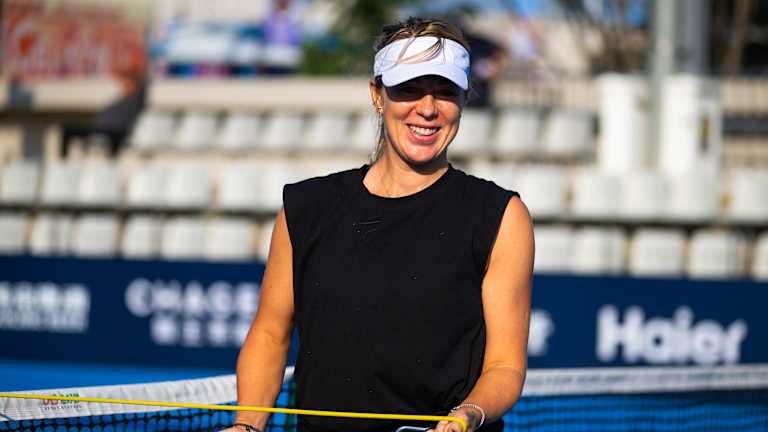Tennis Practice Blueprint: How to Improve Your Game in 1.5 Hours
The Importance of Practice in Tennis
In the world of tennis, the practice court is where champions are made. While some players may view practice as a mere formality, smart athletes understand that it is the key to continuous improvement. It is on the practice court where players can refine their skills, work on weaknesses, and experiment with new strategies.
A Structured Practice Session
If you want to take your game to the next level, consider trying out a 1.5-hour practice blueprint with a partner. This structured session is designed to help you maximize your time on the court and see results. Remember, the effectiveness of the practice session ultimately depends on your effort and focus.
Preparing for Practice
Before you step onto the court, it’s essential to warm up your body. Engage in some light cardio activities like jogging or jump rope to get your blood flowing. Follow this up with some stretching to loosen up your muscles. Starting a practice session cold can increase the risk of injury, so make sure to adequately prepare your body.
Building Confidence
Begin your practice session with mini-tennis in the midcourt. Just as basketball players start with layups before moving on to three-pointers, starting close to the net can help build your confidence and rhythm. Gradually work your way back to the baseline, adjusting your swing length accordingly.
Focusing on Specific Skills
Identify any weaknesses in your game from past matches and dedicate time to address them. Work with your partner to isolate specific strokes and focus on improving them in a non-competitive setting. Both you and your partner should spend at least five minutes each working on refining your techniques.
Drills for Groundstrokes
Practice crosscourts on the singles court with your partner to improve your ground game. Start with controlled rally shots before increasing the pace and spin. Focus on manipulating depths and angles, and maintain crisp footwork throughout the drill.
Mastering Down-the-Line Shots
Devote time to hitting shots down the line, as they can be game-changers in matches. Concentrate on shot length and topspin to achieve depth and consistency. Turn this drill into a game to keep it engaging and competitive.
Refining Secondary Skills
Use this time to work on secondary skills such as slice backhands or volleys to enhance your overall game. Practice playing out points with specific scenarios to simulate real match situations and improve your versatility on the court.
Applying Skills in Competition
Finally, culminate your practice session by playing competitive games, tiebreakers, or using ping pong scoring. Take risks, experiment with new strategies, and apply the skills you’ve honed throughout the session. Embrace failure as a learning opportunity and strive to push your boundaries on the court.
Remember, practice is where the real work is done in tennis. By following a structured practice blueprint like this one, you can elevate your game and make significant strides in your development as a player.
The Mental Aspect of Practice
While physical practice is crucial in tennis, mental preparation is equally important. Use your practice session to work on your focus, mental toughness, and visualization techniques. Visualize successful shots and match scenarios to build confidence and improve your mental game. Remember, tennis is as much a mental game as it is a physical one.
Utilizing Technology in Practice
Take advantage of technology to enhance your practice sessions. Use video analysis tools to review your strokes and identify areas for improvement. Track your progress over time to see how you have evolved as a player. Additionally, consider incorporating tennis ball machines to work on specific shots or patterns consistently.
Incorporating Fitness Training
Integrate fitness training into your practice routine to improve your overall performance on the court. Focus on exercises that target agility, speed, strength, and endurance. A strong physical foundation will not only enhance your game but also reduce the risk of injuries during intense matches.
Working with a Coach
If possible, enlist the help of a qualified coach to guide you through your practice sessions. A coach can provide valuable feedback, create personalized training plans, and help you set realistic goals for improvement. Their expertise and insights can accelerate your progress and help you reach your full potential as a tennis player.
Setting Objectives for Each Session
Prior to every practice session, set specific objectives and goals to work towards. Whether it’s improving a particular stroke, increasing consistency, or enhancing your footwork, having clear goals will keep you focused and motivated throughout the session. Reflect on your performance after each practice to track your development and adjust your goals accordingly.
Staying Hydrated and Fueled
Proper hydration and nutrition play a significant role in your performance on the tennis court. Make sure to drink plenty of water before, during, and after your practice session to stay hydrated. Additionally, fuel your body with nutritious foods that provide sustained energy and support muscle recovery. A well-nourished body will help you maintain peak performance during intense practice sessions.
Recovering and Resting
Don’t overlook the importance of rest and recovery in your training regimen. Allow your body time to rest and recuperate between practice sessions to prevent burnout and injuries. Incorporate activities like stretching, foam rolling, and massage to aid in muscle recovery and reduce soreness. Remember, recovery is an integral part of the training process and essential for long-term success in tennis.
By incorporating these additional elements into your practice routine, you can further enhance your skills, performance, and overall experience as a tennis player. Remember, consistency and dedication are key to achieving your goals on the court. Keep pushing yourself, stay focused, and enjoy the journey of continuous improvement through practice.

